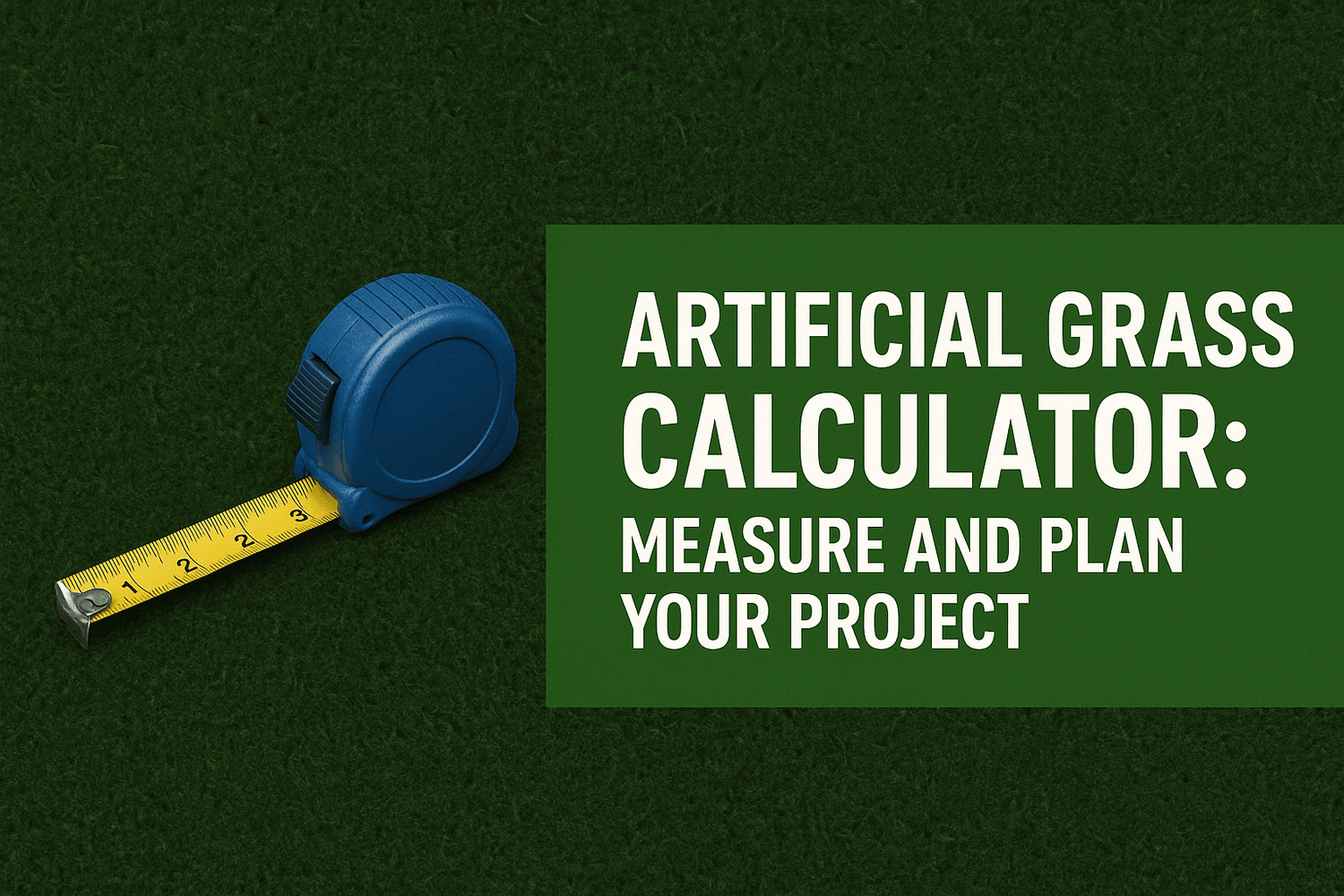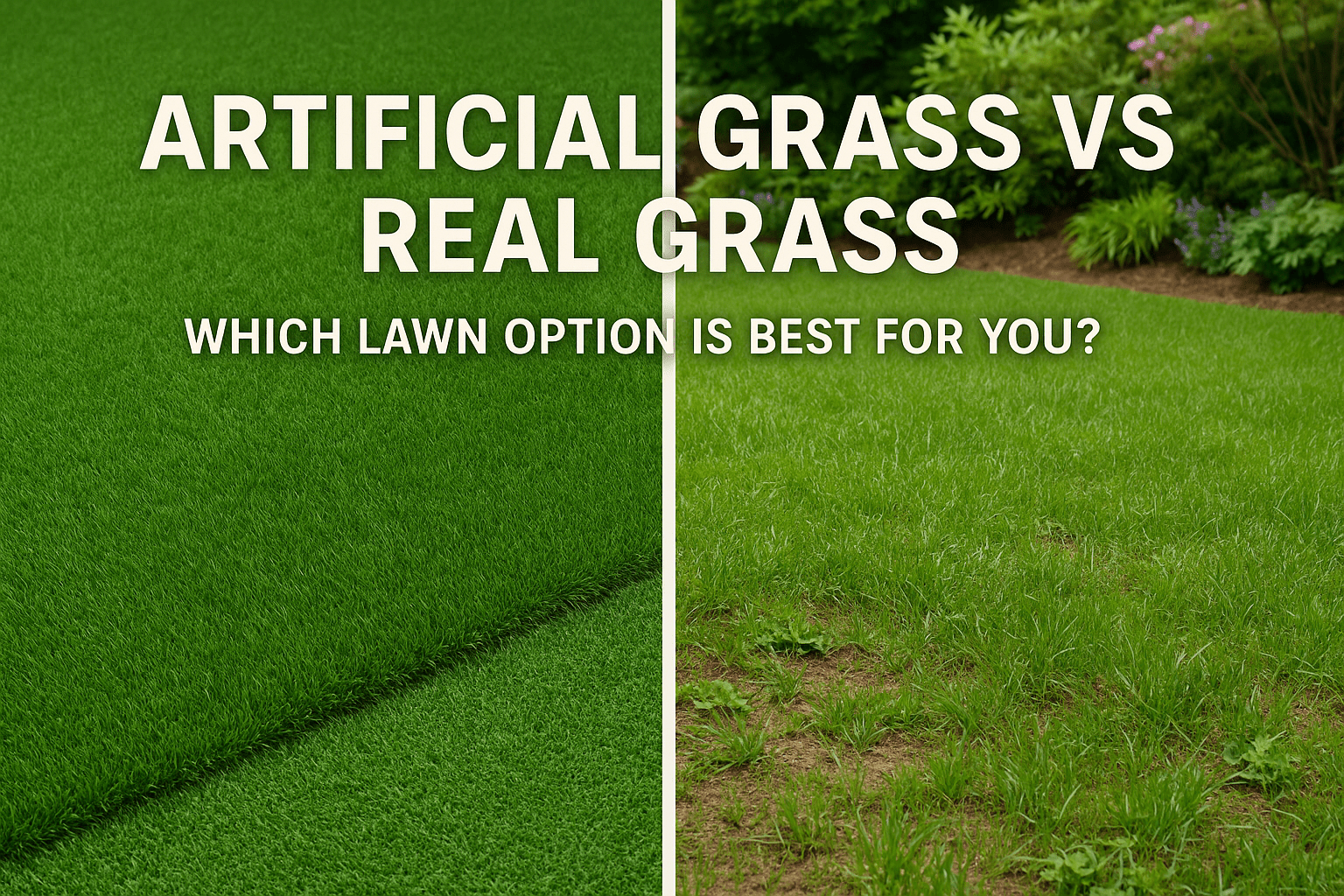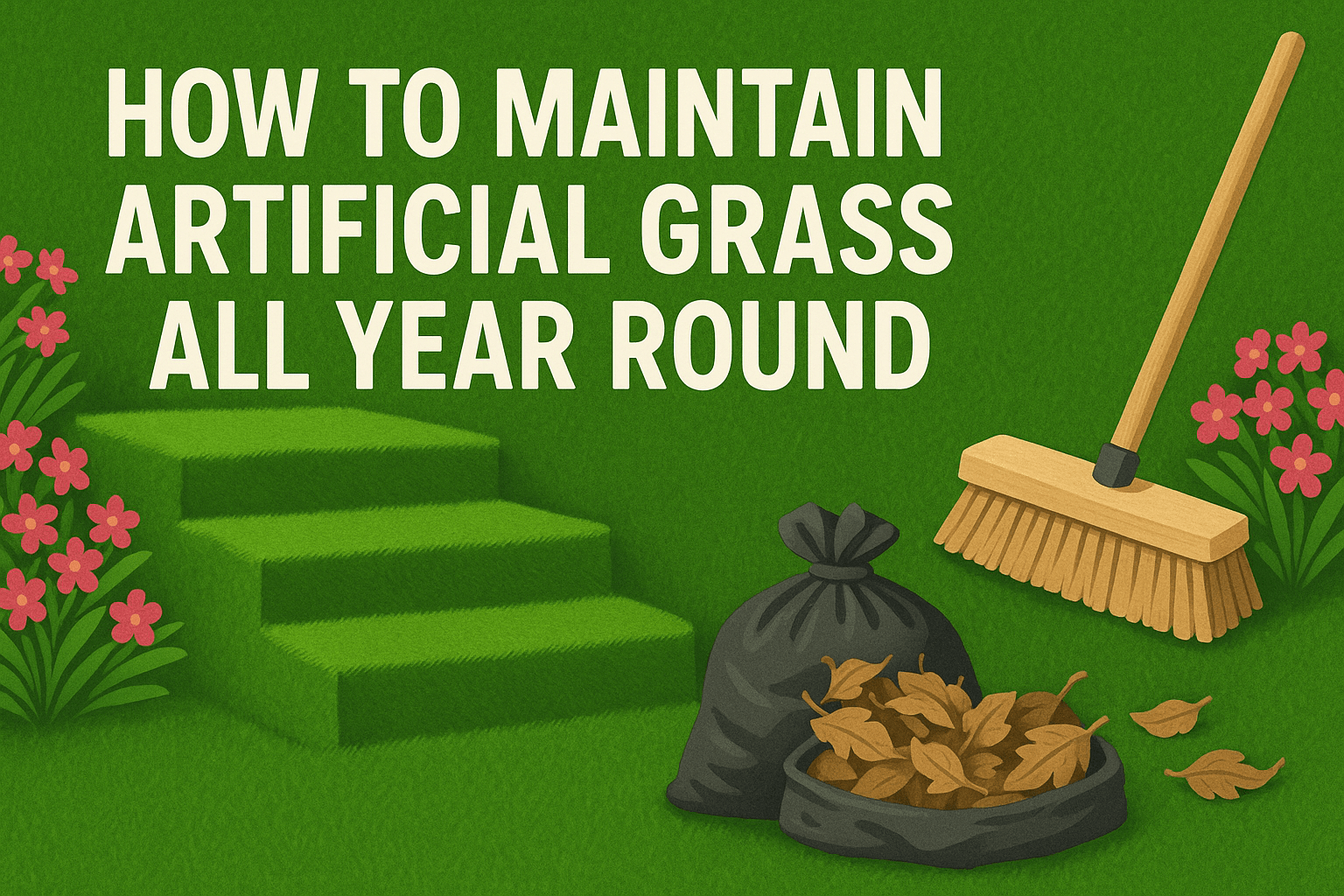An artificial grass calculator is a simple tool that helps you plan your lawn project. It tells you how much turf you need and how much it might cost.
This tool is helpful if you’re thinking about switching to fake grass. It gives you an idea of the artificial grass costs, labor costs, and the amount of turf and materials you need.
Using a calculator is a smart way to start. It helps you plan better, save time, and avoid surprises. With a few numbers, you can get a good project cost estimate in minutes.
What Is an Artificial Grass Calculator and Why Use It?
An artificial grass calculator is an online tool. You type in your yard’s size and choose what kind of turf you want. Then the tool gives you an estimate.
It shows how much turf you’ll need and how much it will cost. It also tells you the installation prices, materials, and any extras like infill or drainage. You’ll know your artificial grass installation cost before anyone steps on your lawn.
Most calculators work in just 6–10 clicks. That means it’s fast. You don’t need to measure by hand or guess your artificial turf quote.
It’s a great way to get a quick, accurate estimate—especially for artificial grass projects with a tight budget or schedule.
How to Measure Your Yard for Artificial Grass
Before using a calculator, you need to measure your yard. Here's how:
Tools you need:
- Measuring tape
- Notepad
- Phone calculator
Step 1: Divide your yard into simple shapes.
Look at your space. Break it into parts: square, rectangle, triangle, or circle.
Step 2: Use these formulas:
- Rectangle or square: Length × Width
- Triangle: (Base × Height) ÷ 2
- Circle: 3.14 × Radius × Radius
Add the square feet of all parts together. That’s your total.
Pro tip: Always add 5–10% more to your total. This helps with cuts, seams, or small errors. It’s called the turf waste factor.
Sample Yard Measurement and Turf Needs
|
Area Name |
Shape |
Size (ft) |
Square Footage |
Add 10% Waste |
Total Turf Needed |
|
Front Yard |
Rectangle |
20 × 15 |
300 |
30 |
330 sq. ft. |
|
Side Path |
Triangle |
10 × 5 |
25 |
2.5 |
27.5 sq. ft. |
|
Backyard Area |
Square |
25 × 25 |
625 |
62.5 |
687.5 sq. ft. |
|
Garden Patch |
Circle |
Radius = 6 |
113.04 |
11.3 |
124.34 sq. ft. |
|
TOTAL |
— |
— |
1,063.04 |
106.3 |
1,169.34 sq. ft. |
Step-by-Step: How Artificial Grass Calculators Work
An artificial grass calculator is an easy tool that helps you plan your turf project. It gives you a quick and clear estimate of how much turf you need, how much it will cost, and how long it may take to install. Here’s how to use it step by step:
1. Measure Your Yard
Start by finding the total square footage of your space. Use a tape measure to get the length and width of each section, then add them up. This is the number you’ll enter into the calculator.
2. Choose the Type of Turf
Most calculators let you choose from different turf types. You can select:
- Landscape turf for lawns and front yards
- Pet turf for dog runs or pet areas
- Putting greens if you want to play golf
- Gym turf for indoor or workout spaces
3. Pick Your Base Materials
To make turf last longer, you need the right base. The calculator may ask if you want:
- A Class II road base for a strong foundation
- A weed barrier to stop weeds from growing
- Drainage layers to keep water from pooling
4. Add Optional Features
Some projects need extra things like:
- Padding for kids’ play areas
- Borders to make the edges neat
- Infill (sand, rubber, or pet-friendly)
- Extra drainage systems for wet soil
5. Select Roll Width
Most turf comes in 15-foot rolls. The calculator uses this to figure out how many rolls you’ll need and how to cut them with less waste.
6. View Your Estimate
Finally, the tool gives you a full estimate. It shows:
- Artificial grass installation cost
- Labor costs
- Estimated installation time
It’s quick, easy, and helps you plan smarter.
Sample Project Cost Scenarios
Here are real examples to help you understand the possible project cost.
|
Project Type |
Area (sq. ft.) |
Est. Cost |
|
Pet Turf |
400 |
$5,990 |
|
Backyard Turf + Stones |
875 |
$11,400 |
|
Balcony Turf |
500 |
$4,200 |
|
Putting Green + Pavers |
1,200 |
$24,000 |
Each project is different. These numbers depend on design, materials, and labor costs in your area.
Key Factors That Affect Turf Installation Cost
The final turf installation cost depends on many things:
- Turf Type: Landscape turf costs less than pet turf or putting greens.
- Roll Size: Bigger rolls reduce seams but may cause more layout waste.
- Infill Material: Sand is cheaper, while rubber or pet infill costs more.
- Base Preparation: Slopes, drainage layers, and weed control all add to cost.
- Site Conditions: Stairs, narrow paths, and slopes make work harder.
- Labor Costs: These vary per square foot by region.
- Custom Features: Edging, seams, paver borders, or curves increase the price.
Pet Turf, Playgrounds, and Putting Greens – Custom Calculators
Not all turf is the same. That’s why many calculators offer custom options:
- Pet Turf: Often has odor control, strong drainage, and soft infill material. Some use special turf made for paws.
- Playgrounds: Need shock pads under the turf to help reduce injuries. Also, antimicrobial infill helps keep it safe for kids.
- Putting Greens: Have tight seams and special slope design. This helps the ball roll the right way.
Using a synthetic turf calculator that understands these extras gives you a better price guide. Each one helps you plan for what matters most—whether that’s clean play, soft landings, or smooth ball movement.
DIY vs. Professional Installation – What the Calculator Can’t Tell You
Using a turf calculator shows project cost and materials. But it doesn’t show the full picture—especially when choosing between DIY and hiring a pro.
DIY turf jobs save on labor costs, but they aren’t easy. You might end up with poor drainage, loose turf, or ugly wrinkles.
Professional installation costs more, but it comes with experience, proper tools, and often a warranty. Pros know how to handle slopes, seams, and base layers the right way.
If you try it yourself, you’ll need tools like:
- Turf cutter
- Plate compactor
- Seaming tape and glue
Use the artificial grass cost calculator as a starting point. Then think about your skills, time, and tools before choosing DIY.
Real-Time Planning Tools: What Top Calculators Offer
The best turf calculators do more than just basic math. Many top tools give instant results in just 6–10 clicks. Here’s what they offer:
- Custom quotes for pet turf, balcony turf, and putting greens
- Mix and match turf with pavers, stepping stones, and infill material
- Real-time updates for cost per square foot
- Turf seam layout suggestions and total roll count
- Easy forms to request quotes or schedule a call
Mistakes to Avoid When Using a Turf Calculator
Turf calculators are handy, but only if used right. Watch out for these common mistakes:
- Wrong measurements: Measure each space carefully. Use a calculator or notepad.
- No turf waste added: Always add 5–10% for cutting waste and seams.
- No base layer planning: Don’t forget to include road base and drainage rock.
- Wrong turf type: For example, gym turf isn’t made for outdoor use.
Planning Beyond the Calculator: What to Do After You Estimate
Once you get your turf quote, there are a few smart steps to take next:
- Talk to a turf expert to review your plan.
- Ask for free turf samples to see the texture and color.
- Book an on-site check so they can spot any tricky areas or slopes.
- Ask about financing options, install timeline, and warranty details.
Getting Help from LITA GRASS – Plan with Confidence
Once you use a turf calculator, you may still have questions. That’s normal. Every yard is a little different. That’s where a team like LITA GRASS can help.
LITA GRASS is more than just a turf supplier. They work with homeowners, builders, and property managers to make sure each turf job is done right. If you’re unsure about how much turf to order, what type to choose, or what base layer you need, their expert team can walk you through it.
They can also check your measurements, help plan for turf seams and waste, and explain which turf is best for pets, play, or looks. If you need extra features like drainage or padding, they’ll explain your options in simple steps.
Using the calculator is a great start. But teaming up with LITA GRASS gives you the support to go from estimate to finished project—without the guesswork. You can contact their team for honest answers and real help as you plan.
Final Thoughts – Why a Turf Calculator Is the Smart First Step
An artificial turf quote tool is a great way to start planning. It helps you understand artificial grass costs, what materials you need, and what to expect.
It also lets you compare turf types and plan your project cost with more confidence.
But remember: calculators are guides. They can’t replace professional advice. Talk to an expert to confirm your numbers, get tips, and plan your next steps.
Ready to Turn Your Estimate Into a Real Plan?
Connect with the LITAGRASS team for expert guidance, accurate quotes, and turf recommendations that match your project.



Leave a comment
This site is protected by hCaptcha and the hCaptcha Privacy Policy and Terms of Service apply.